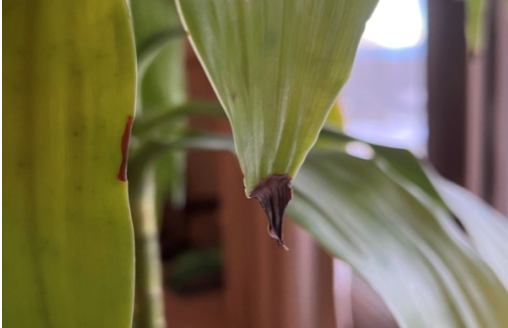Ask the determined gardener: Asparagus Rust
What can I do about asparagus rust?
Asparagus rust occurs in most growing areas. The fungus attacks developing ferns after cutting has stopped but can occur on ferns allowed to develop during cutting. This first appears as raised green spots (pustules). Spores from these pustules re-infect developing ferns, causing brick-red pustules. The red color may be evident when rubbed against white paper or light clothing. First, try to locate a Rust-resistant variety if available. Cutting all growth in the row to or below the ground at harvest will break the disease cycle. Plant rows 6 feet apart, promoting good drying and circulation. Long periods of dew production and dry weather favor the presence of rust. Discard all dry materials from your crop to reduce reinfection. More information is available in publication EPP-7646. If infection occurs after harvest, use a fungicide recommended for Cercospora blight as recommended. Chlorothalonil or Mancozeb (5 day wait before harvest) can be used, only in the fern stage, usually after harvest. Read and follow all instructions; determine if this is a product for public use.
How should I be watering my evergreens, especially in winter?
Lack of soil moisture is often a major cause of winter damage in all trees. Evergreens should be watered thoroughly in the fall to prepare for the winter months. Water should be allowed to soak to below the frost line. You may punch or drill holes to assure good water saturation. Broadleaf evergreens should be watered at least once a month, especially pot grown varieties; these still need watering even in a wet season. Those potted in a soilless mix should be watered more often. Soilless mixes absorb very little water. See publication F-6404 for more information on winter protection of all landscape plants.
My oak tree’s leaves are dying in spots with no apparent damage to the trunk.
This is probably Bacterial Leaf Scorch, a chronic disease caused by a bacterium, Xylella fastidiosa. Many trees are hosts to this bacterium, which grows in the xylem of the tree and blocks the flow of water and nutrients to the branches. Water stress, especially in mid-to-late summer causes a browning of the margins of the leaves, leaving the interiors remaining green. Symptoms are often mistaken for oak blight or Dutch elm disease. Scorch and decline occurs progressively over several years rather than months with the other diseases. A plant tissue lab must perform a positive diagnosis to determine if the bacterium is present. Preventative pruning may lessen the seriousness of the disease, but tree death is most likely after many years. A replacement tree can be planted before the diseased tree is removed.
Crapemyrtle bark scale is ruining the look of my trees.
Crapemyrtle, Acanthococcus lagerstroemiae, an exotic insect pest from Asia wreaks havoc among Oklahoma landscapes. This insect deposits honeydew on both branches and foliage, encouraging the growth of black sooty mold. Bark scale is not fatal but greatly affects the tree’s beauty creating smaller flowers, scale bodies and promoting black sooty mold. Crushing the scale by hand will create a pink blood-like liquid. Bark scale insects exude a waxy deposit that becomes felted or matted onto the bark. Brush scrubbing the areas with a soap solution will expose the immobile insects and eggs laid under this cover. Females lay eggs from May through September. Two generations of scale may be present North of I-40 and three to four generations in the Southern region. Current report CR-7092 lists suitable treatments for crapemyrtle bark scale. Dimethoate (Dimethoate 4 E) applied every 10 to 14 days is listed as a treatment. Observe phytotoxicity precautions. (Sunlight may enhance damage or danger when using this product). For best results, consult with a licensed pest control specialist for advice on whether this is a safe owner applied treatment.
When is the best time to separate irises?
Fall is the best time to separate and propagate irises. Cut fans to approximately five-inch length in a curved pattern, taller in the center, cut off damaged or rotten areas. Allow cuts to scarify, harden off a few days, and then plant with the tops of the tubers just touching the surface. Mulch new plantings for winter protection.

